
Table of contents
- appearance and origin
- Brown algae: Optimal conditions
- Remove brown algae
- Pay attention to the water quality
- With light against brown algae
- Plants in the fight against brown algae
- Feed fish sparingly
- Remove plant debris and protect the pond
- Worth knowing about brown algae in brief
Brown algae live in every pond, but can become a nuisance under unfavorable conditions. With these tips, these organisms can be successfully combated.
appearance and origin
brown algae, lat. Phaeophyceae, are a large group of different-looking algae. Diatoms (Bacillariophyta) because they also look brownish. These two types of algae have one thing in common: they need silicon oxide for cell division. Brown and diatoms can be combated using the same methods. In the garden pond, these algae usually take the form of branched cell threads that attach themselves to plants and stones. Most species of brown algae are found in salt water, with only five species found in fresh water. These algae prefer to live in cool waters, so they are often found in ponds as well. Sometimes these organisms become a real nuisance to the gardener. The brown algae spread uncontrollably, they suppress the aquatic plants and take away light and nutrients from them. The appearance of the pond also suffers greatly from the brown algae. These creatures are part of the natural population in every body of water, and their spread is evidence of the disturbed balance in the pond.
Brown algae: Optimal conditions
In order to successfully combat brown algae or diatoms, the gardener should first know which conditions can promote their growth. In contrast to most other algae, brown algae only need little light for their growth, but thrive in the shady areas. These algae feel particularly comfortable in hard water (over 14 °dH). In addition, these organisms require different nutrients, e.g. B. Nitrogen, phosphorus and other chemical elements. The source of these nutrients in the pond are dead plant parts, leaves, pollen or dead animals (insects, larvae, etc.). If fish are kept in the pond, leftover food is one of the most important sources of nutrients for the algae.
Remove brown algae
In contrast to many other algae, brown algae can be removed mechanically relatively easily. From the surface of the pond, these can be collected with a net. A special pump can also be used for surface cleaning. It is a bit more difficult to remove algae from the bottom of the pond. For a gardener z. B. attach a sponge to a long stick and use this device to try to remove the algae. Of course, this method is not easy to use, especially in the case of a heavy infestation, because the water quickly becomes cloudy and the situation is therefore too confusing. The only thing that helps here is pumping out the water and cleaning the entire pond with a strong jet of water. This procedure is not very pleasant for water dwellers. Aquatic plants can go out of their element for some time, especially if kept moist. Of course, fish have to remain in a water container until the pond is filled with fresh water.
Tip:
Even with a partial water change (up to 3/4 of the volume), many algae floating in the water or parts thereof are removed.
Pay attention to the water quality
It is worth using only soft water so that the algae plague does not return after the pond has been filled. A reliable source of quality soft water is the rain barrel. It is not advisable to fill the pond with tap water, as this contains too many substances that not only offer a good breeding ground for the brown algae, but also unhealthy for the water dwellers are. The water hardness can be reduced significantly with the help of an osmosis system, but on the one hand these systems cost a lot of money, on the other hand they work quite slowly. Tip: calcareous stones continuously supply the algae with nutrients; such materials must not be used or allowed to build a pond. are to be removed.
With light against brown algae
Both brown and diatoms like shade and will spread quickly in poorly lit parts of the pond. The gardener can prevent the brown algae plague by avoiding shady areas when laying out the pond. Partial shade is ideal for a new pond. Sunny locations are less recommended because they favor the spread of other types of algae, e.g. B. blue-green algae. Relocating an existing pond is not that easy, but you may be able to remove some branches or plants that are overshadowing the pond.
Plants in the fight against brown algae
Newly created ponds in particular often suffer from brown or diatom infestation. The reason for this is often young, small aquatic plants that have just been planted and can only process a few nutrients. The more "food" remains for the algae. That is why it is worth putting a few well-developed adult aquatic plants in the pond. These compete with the algae for nutrients, and with success.
Tip:
Underwater plants in particular withdraw the nutrients from the algae.
Feed fish sparingly
Food leftovers contain many nutrients that are important for the algae. The koi or other fish species often tend to beg for food, which does not necessarily mean that the animals are hungry. It is worth feeding only so much that fish can eat their food within approx. eat five minutes. Otherwise, the remains will sink to the bottom and will not feed the fish, but the unwanted algae.
Remove plant debris and protect the pond
Regular pond care includes removing the dead parts of the aquatic plants and leaves with the net in order to deprive the brown algae of the breeding ground. In the fall, the gardener can cover the pond with a net to keep the leaves out of the water.
- Combating brown algae in brief:
- remove mechanically,
- change water completely or partially,
- Provide better lighting conditions
- remove limestone containing materials,
- feed fish less
- remove dead plant remains and leaves,
- Only fill the pond with soft water.
Brown algae can also be successfully combated without the use of algaecides. It is only worth resorting to chemical means after all other means have failed.
Worth knowing about brown algae in brief
- Most of the approximately 10,000 species of brown algae are found in temperate or cold seas. Accordingly, they feel very comfortable in the North and Baltic Seas.
- However, they are not only found there, because some species also feel at home in fresh water and so the brown algae have also found their way into our aquariums or garden ponds moved in.
- In contrast to many other types of algae, brown algae do not prefer good, but rather bad light conditions.
- However, the fact that they then grow better only indirectly has something to do with the lighting.
- Rather, it is them aquatic plants, which grow little or not at all in such poor light conditions and thus offer the brown algae enough space to spread.
- The easiest method is therefore to ensure that the lighting is good enough for the plants to grow well.
- Plant growth also promotes underfloor heating in the tank.
- Silicic acid plays a not insignificant part in the development of brown algae.
- Brown algae problems are often encountered in new aquariums filled with tap water.
However, it does not help to just reduce the silicic acid content, because the brown algae naturally need other substances to reproduce, which are always contained in the water. If you notice an oversupply of nutrients in your aquarium or pond, it is best to use fast-growing plants that need a corresponding amount of nutrients. You should also make sure that the water you use is not too hard. It may be sufficient to filter with peat under certain circumstances, but it is better to fill in distilled water or osmosis water with every water change.
If you want to rid your pond or aquarium of brown algae, in addition to changing the water, you should of course also remove the algae algae necessary, otherwise a brown algae plague will reappear after just a few days. Once the water has been removed, the brown algae are removed from the infested objects using a coarse sponge or a razor blade. Affected plant parts do not have to be removed. Suctioning off with the help of a debris bell can also be successful.
 garden editorial
garden editorial I write about everything that interests me in my garden.
Learn more about algae in the pond
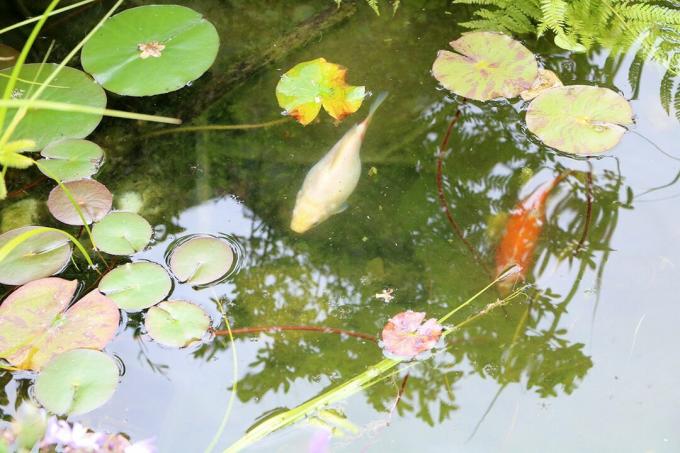
Floating algae in the pond: 10 tips for removing them
Algae infestation is not only unsightly to look at, but can also pose a threat to aquatic animals and plants. For this reason, it is advisable to always remove floating algae - read here how this works best!
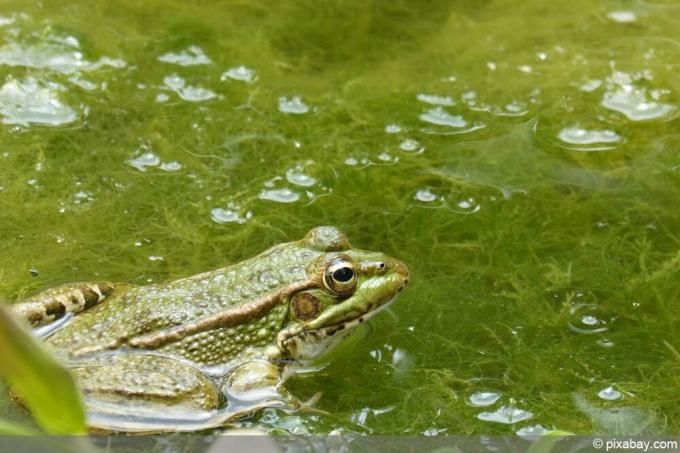
Algae eater in the pond: 5 hungry pond fish
Algae growth in the garden pond not only looks unsightly, but excessive growth can tip the entire ecosystem over. In this article we will tell you which types of fish, snails and mussels like to eat algae and what else helps against the "green plague".
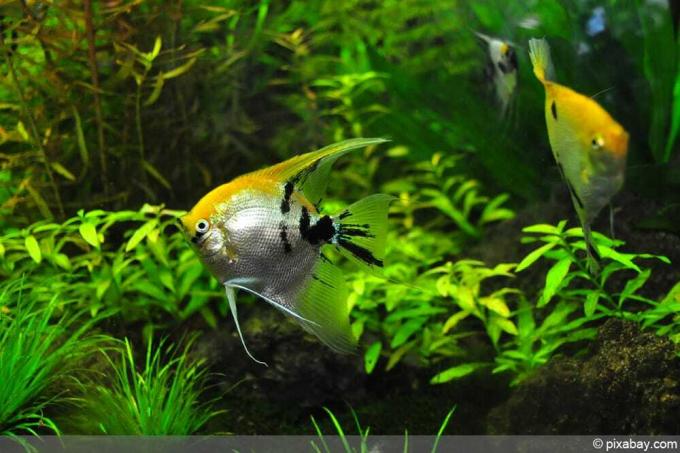
Combat thread algae in the aquarium
The right countermeasures must be taken at an early stage to ensure that the thread algae in the aquarium do not grow too rampant and become a nuisance. Otherwise, the aquatic plants can severely disturb the sensitive ecosystem of the aquarium and also negatively affect the visual appearance.
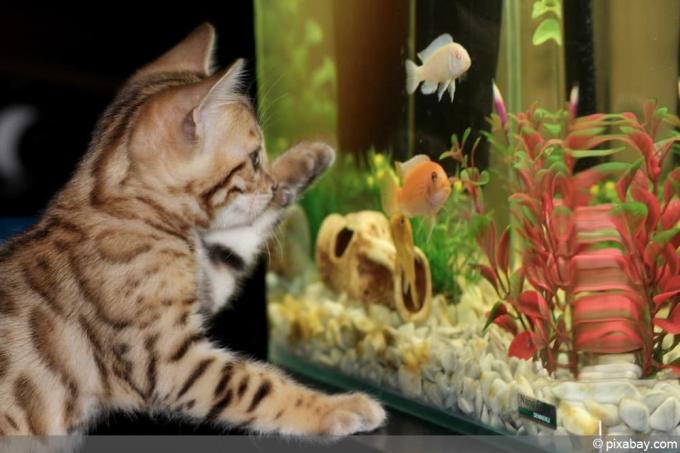
Get rid of green algae in the aquarium properly
Green algae occur in every aquarium. This is normal and part of it. It can even speak for a particularly good water quality. Only a massive increase in algae caused by too much light and too many nutrients is not normal. The green coloring and turbidity of the water means nothing other than that the biological balance has gotten out of joint. There are different green algae, also with quite different requirements. However, all benefit from an excess of food and can best be combated by depriving them of food.
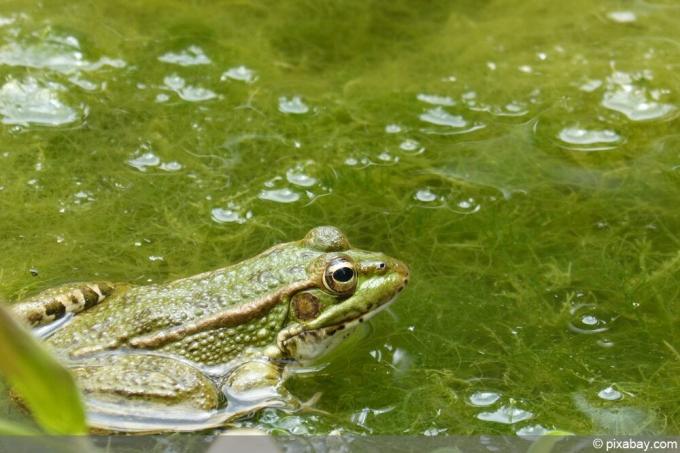
Natural remedies against thread algae
Algae in the garden pond are an absolute nuisance, but can hardly be avoided. Besides, they are useful too. They serve as food for microorganisms and also produce vital oxygen. It gets annoying when they multiply en masse.

The best home remedies for algae in the aquarium
Algae in the aquarium are absolutely natural and normally do not have to be fought. It only becomes difficult when they multiply explosively. There is a reason for this increase. It has to be found and turned off. That sounds simple, but it isn't.



